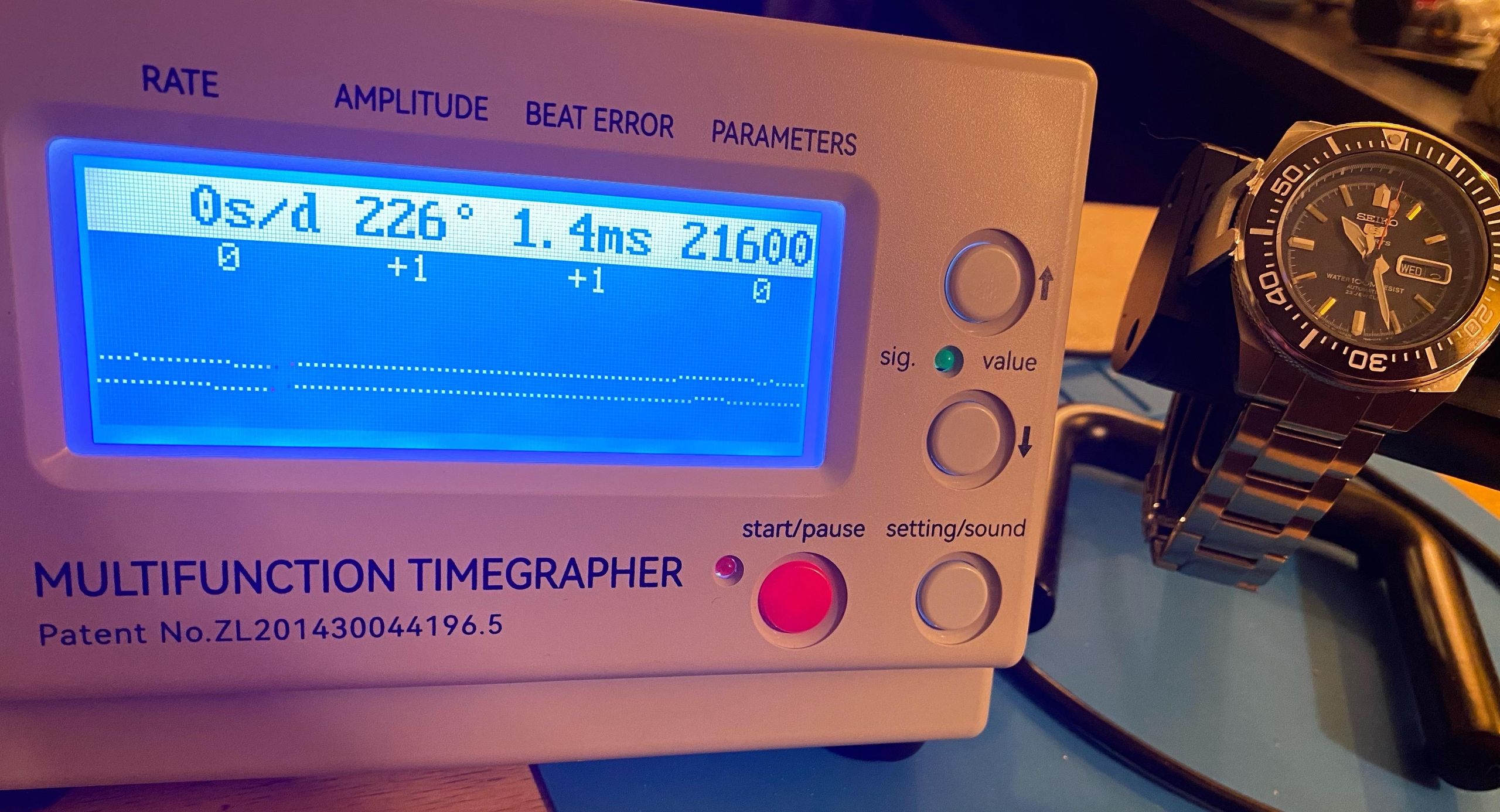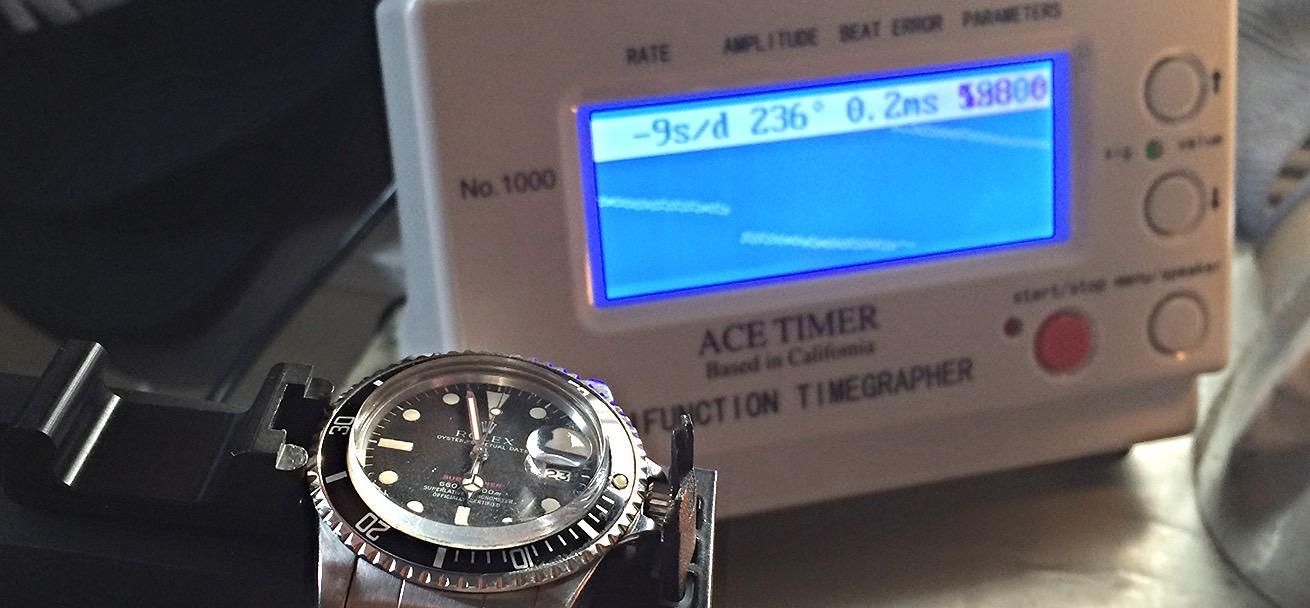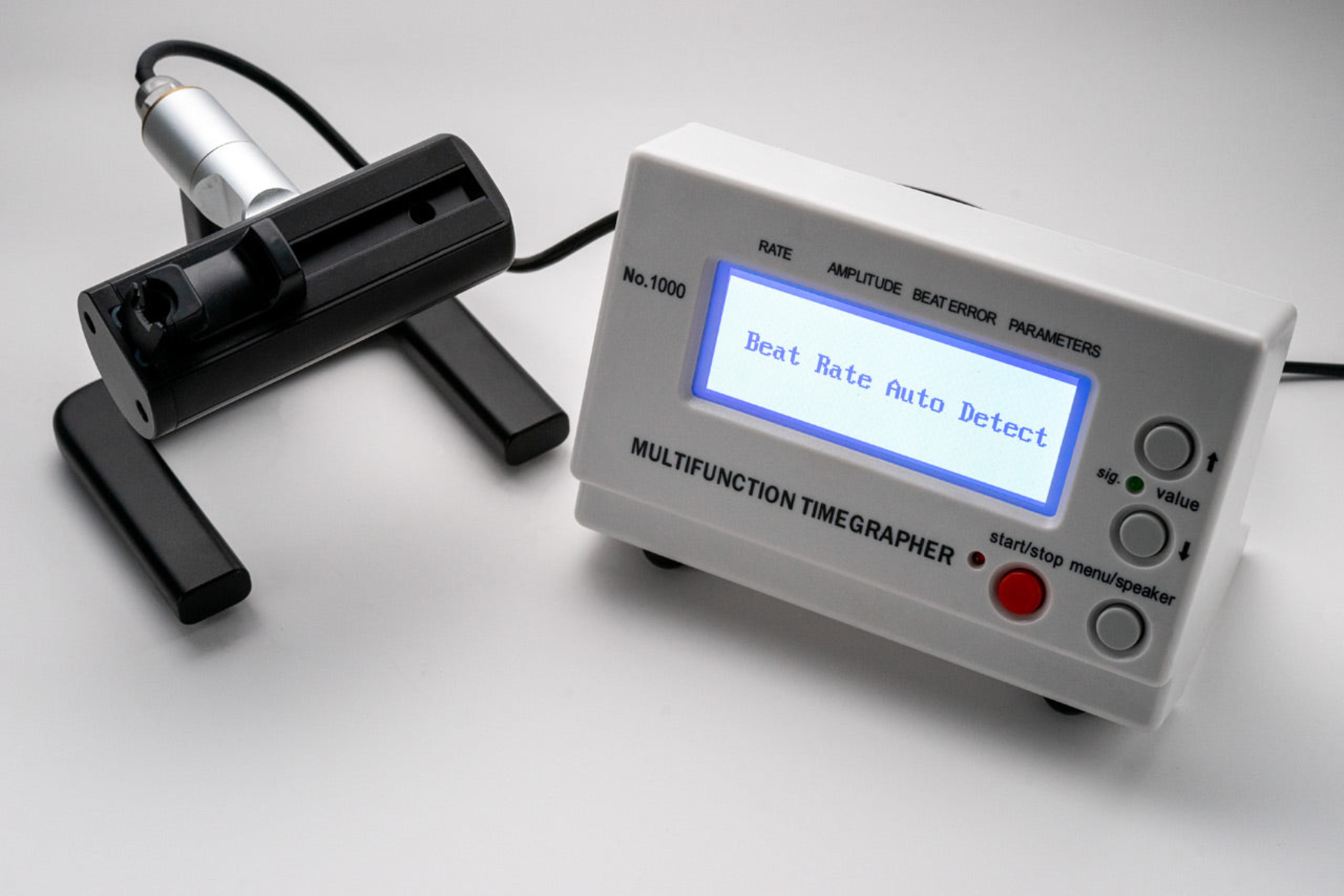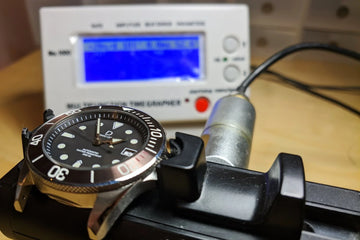Beat error is an important measure of a mechanical watch's health, but it's often misunderstood. While a high beat error might seem like a major problem, it doesn't directly cause a watch to lose or gain time. Instead, it's a sign of an imbalance in the watch's heart, which can affect its overall performance and the stability of its timekeeping.
What Beat Error Is

Beat error is the difference in time between the two swings of a mechanical watch's balance wheel. In a perfect world, the balance wheel would tick-tock symmetrically—the swing to the right would take the exact same amount of time as the swing to the left. When the timing of these two swings is unequal, the watch has a beat error.
This happens because the impulse jewel on the balance wheel is not perfectly centered when the movement is at rest. The balance wheel doesn't begin its swing from a neutral position. Instead, it starts from a slightly off-center spot, which means one of its swings is shorter and faster, and the other is longer and slower.
Beat error is measured in milliseconds (ms). A reading of 0.0 ms means the two swings are perfectly equal. Anything above 0.0 ms means there is a beat error, but a reading up to 0.5 ms is generally considered acceptable for most watches. A reading of 8.0 ms, as seen on an old Orient movement, is very high and indicates a significant imbalance.
The Practical Impacts of Beat Error

While a high beat error doesn't directly cause a watch to run fast or slow, it's a critical indicator of its overall health. A watch with a high beat error can suffer from a few key problems:
-
Reduced Amplitude: Beat error can limit the maximum arc of the balance wheel's swing. A watch with a very large beat error may come to a halt sooner than it should or fail to start on its own with a minimal wind.
-
Worse Positional Variation: When a watch is "out of beat," it can be more sensitive to changes in position. The beat error may worsen in vertical positions, which is a normal effect, but a very high error can make the watch's timekeeping less stable throughout the day.
-
Less Efficient Power Usage: An unbalanced swing means the movement is not operating at its peak efficiency. A watch that is in beat uses the mainspring's stored power more effectively, which can lead to a more consistent rate and better performance over its entire power reserve.
How Beat Error Is Measured and Why It Matters

Watchmakers use a special tool called a timing machine to measure beat error. This machine listens to the watch's ticks and displays a visual graph. On the graph, each tick of the watch is a single dot. When there is no beat error, the dots form two straight, parallel lines. When beat error is present, the lines are separated, with the gap between them representing the amount of error.
While beat error doesn't directly affect a watch's daily timekeeping rate, it is still a problem because it can reduce the watch's amplitude (the arc of the balance wheel's swing). A high beat error limits how much the balance wheel can swing before it "gallops" or "knocks," which can cause the watch to stop or become less stable. A watch with a very large beat error may also not be able to start on its own with a minimal wind and may require shaking to get going. A lower beat error allows the watch to run with a more consistent amplitude and makes better use of its stored power.
How Watchmakers Fix It
The main cause of beat error is the incorrect positioning of the stud carrier, the part that holds the hairspring, or the hairspring collet, the small part that attaches the hairspring to the balance staff.
To correct beat error, a watchmaker can:
-
Move the Stud Carrier: This is the most common and easiest method. The stud carrier can be carefully rotated in tiny amounts to adjust the starting position of the balance wheel. A watchmaker will do this while observing the beat error reading on a timing machine. The goal is to get the beat error as close to 0.0 ms as possible.
-
Adjust the Hairspring Collet: In some cases, especially on older movements where the hairspring is fixed to the stud carrier, a watchmaker might need to move the collet itself. This is a more delicate process and requires special tools to make tiny adjustments without damaging the fragile hairspring.
-
Static Adjustment: A watchmaker can get a close-to-correct beat error without a timing machine. This involves observing the movement's parts directly. A watchmaker can mark a reference point on a bridge and on the balance wheel. They can then manually turn the balance wheel to see where the impulse jewel engages and disengages the pallet fork. The goal is to find the exact middle point of this engagement arc and adjust the hairspring so that the balance wheel rests exactly on that midpoint. A correct static position ensures the watch will have a good beat error once running.
Fixing a high beat error is a key step in a watch service. It doesn't just make the watch look better on a timing machine; it ensures the movement can achieve its maximum performance, a stable amplitude, and reliable timekeeping.
The Perfect Beat: Argos Olympus
A watch's true quality is measured by the steady rhythm of its heart. A balanced, consistent beat is the sign of a movement that is not just telling time but doing so with a level of precision that ensures long-term reliability. It's a testament to the care and skill put into every detail.
The Argos Olympus is built on this principle. Every component within its automatic movement is meticulously regulated to achieve a perfect beat, ensuring a consistent swing and stable timekeeping. This commitment to internal balance means you can rely on your watch to perform flawlessly, day in and day out.
Discover the Argos Olympus, where precision engineering meets timeless design.

